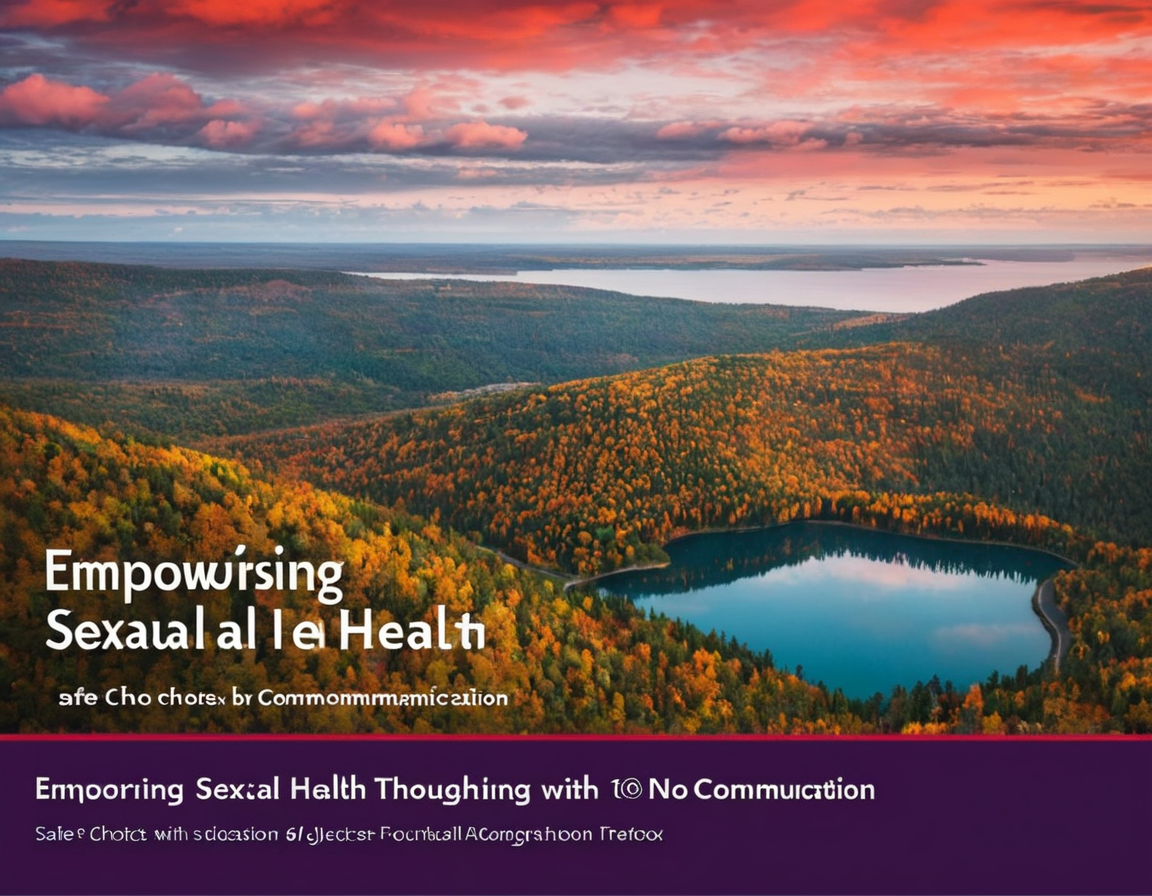: Empowering Sexual Health: Safe Choices Through Education & Communication

Introduction
Sexual health is an integral aspect of overall well-being, and it’s crucial that we prioritize education and communication when discussing this topic. With the stigma surrounding sex often preventing open dialogue, individuals can be left in the dark about their rights, boundaries, and safety. By fostering a culture of empowerment through informed choices, we can create a safer and healthier environment for all.
Chapter 1: Choose Your Resources Wisely
In today’s digital age, access to information regarding sexual health is abundant but not always reliable or accurate. It’s essential to choose reputable resources that prioritize evidence-based , such as websites from accredited medical organizations and government health departments, peer-reviewed journal articles, and books authored by experts in the field.
Here are some trusted resources to get you started:
1. Centers for Disease Control and Prevention (CDC) – www.cdc.gov/sexualhealth
2. World Health Organization (WHO) – www.who.int/news-room/fact-sheets/detail/adolescent-and-young-person’s-health
3. Planned Parenthood – www.plannedparenthood.org
4. Sexuality Information and Education Council of Canada (SEICC) – www.seic.ca
5. The American College of Obstetricians and Gynecologists (ACOG) – www.acog.org/womens-health
6. National Institutes of Health’s MedlinePlus – medlineplus.gov/sexualhealth.html
Chapter 2: Communication is Key
Effective communication between sexual partners can significantly enhance pleasure and mitigate risk. Discussing boundaries, desires, and expectations early in a relationship establishes trust and respect while promoting safer sex practices.
Here are some tips for better communication during intimate encounters:
1. Be clear and direct with your needs, desires, and boundaries.
2. Practice active listening to ensure you understand your partner’s perspective. Learn more about Sexual
3. Use “I” statements rather than accusatory language when addressing concerns or discomfort.
4. Schedule regular check-ins during intimate encounters to assess safety measures, emotional well-being, and consent.
5. Remember that communication is a two-way street – encourage your partner to express their thoughts as well.
6. Consider engaging in role-playing exercises to simulate conversations about boundaries or limits before actually encountering those situations.
7. Seek out resources on healthy communication practices within intimate relationships, such as books like “The Relationship Cure: A 5 Step Treatment for Those Who Want to Improve Their Relationship” by John Gottman and “Hold Me Tight: Seven Conversations for a Lifetime of Love” by Sue Johnson.
8. Consider attending couples therapy or seeking individual counseling if communication challenges persist.
Chapter 3: Safer Sex Practices
Safer sex practices are essential in reducing the risk of contracting sexually transmitted infections (STIs) and promoting overall sexual health. Using barrier methods, such as condoms and dental dams, can significantly minimize these risks while empowering individuals to make informed decisions about their bodies.
Here’s a brief overview of safer sex practices:
1. Use male latex condoms correctly every time you have penetrative vaginal or anal intercourse.
2. Utilize female condoms and internal dams for added protection during vaginal or anal penetration with toys, fingers, or another body part.
3. Implement dental dams when engaging in oral-vaginal contact to minimize the risk of STIs.
4. Get regularly tested for sexually transmitted infections and discuss STI status with all sexual partners before any intimate encounters.
5. Ensure that all involved are aware of, consenting to, and comfortable with each activity during sexual experiences.
6. Explore resources like the American Sexual Health Association (www.ashastd.org) for additional information on safer sex practices tailored specifically to your needs.
7. Remember that no one is responsible for another person’s actions regarding safe sex; always prioritize your own safety and well-being first.
Conclusion: Empowering Ourselves Through Education & Communication
Education, communication, and understanding our rights and boundaries are crucial components in promoting empowered sexual health. By choosing reputable resources, maintaining open lines of dialogue with partners, and practicing safer sex measures, we can create a safer, more satisfying environment for all individuals involved in intimate encounters.

Remember that your sexual health is an integral part of your overall well-being, and prioritizing these practices will not only enhance pleasure but also minimize risk. By promoting education and communication within our communities, we can work towards a future where everyone enjoys empowered, informed, and satisfying sexual experiences.
